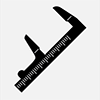1+1=3
student project visualizations from
data visualization
formerly called
information space
In 1970, Joseph Albers described the visual/cognitive phenomenon when two objects are placed next to one another.
At first, the two objects are discrete — each has its own form and identity, and exists in its own space. There are clearly two independent objects. Then as the two objects, usually two very like figures, are brought closer to one another, they begin to interact with one another in our eye visually. The space between them, and the interaction between them, at a point suggests something new — a third object — that is formed by the simple juxtaposition of the initial two, as the derivative construct of the two source objects. Such an interaction could be conceived as noise, or if read differently (or structured more precisely) as the construction of insight.
"A conversation with Josef Albers"
These HTML5 / SVG visualizations, built by students at the University of Virginia in less than one semester, seek to harness this phenomenon, but do so with data across complex problems facing our society.
feel free to "play"...
All visualizations and content are Copyright © 2003-23 by the students identified. They are published here with permission.
*** All Rights Reserved.***
Icons above are from The Noun Project.












